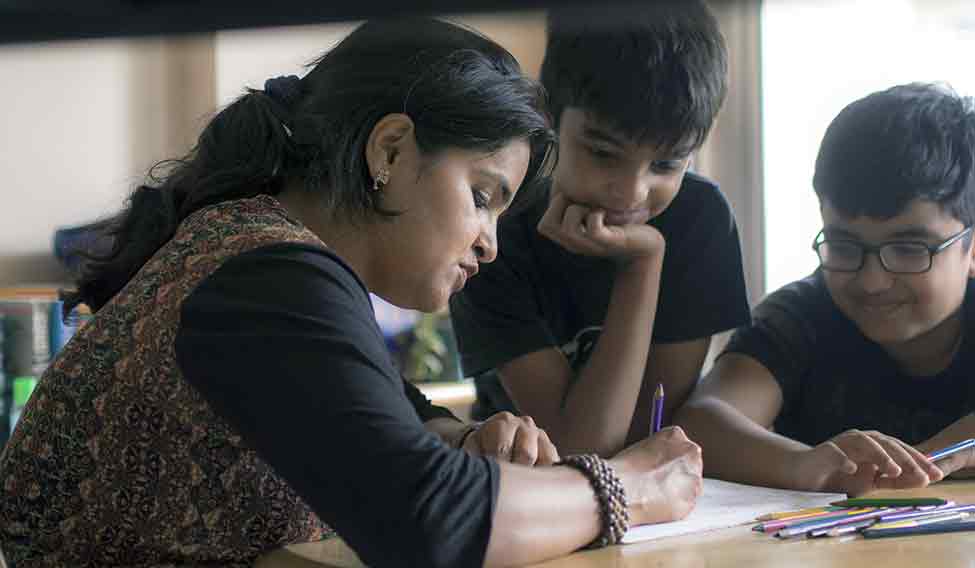When Meera Nair slid a colouring book on snowflakes into her shopping trolley, her sons, Aditya and Achintya, wondered who it could be for. When Nair announced that the colouring books were for herself, the boys, aged 13 and 9, were surprised.
Nair, a 40-year-old freelance content writer in Bengaluru, says she likes the concentration colouring demands of her. "When I do colouring, I’m totally focused, not trying to multitask and my thoughts don’t overwhelm me. For me, personally it is one of the few activities where I feel something akin to meditation," she says. "The act of colouring feels very powerful. I can instantly create worlds of happiness or sadness with my choices."
Colouring books for adults are all the rage in metros, where bookshops offer colouring books of all genres like fantasy, realism and psychedelics. Books featuring botanicals, mandalas and henna and tattoo designs are much in demand. So are the ones based on television series like Game of Thrones. For those who follow it, colouring the stars of the series is like infusing life into them.
Colouring books for adults have been hugely popular in the west. Illustrator Mell Simon Eliot’s series titled Colour Me Good featuring celebrities like Lady Gaga took the world by storm.
Those who tried it claim that colouring can significantly improve one's sense of well-being and mood. "It activates different areas of our right cerebral hemisphere," says Dr Era Dutta, consultant psychiatrist at SL Raheja Fortis Hospital, Mumbai. "Colouring stimulates parts of the cerebral cortex responsible for vision and fine motor skills. It involves a complex interaction of seeing, perceiving and processing colours. Choosing a shade and mixing the water colours are seemingly child’s play but they have some positive effects on the brain. They boost creativity and critical thinking skills."
Mumbai-based Nupur Khanna colours even her son’s cartoon books. Khanna, 28, sometimes wonders why she never outgrew the activity. "I still do colouring maybe because it makes me feel happy. I get instinctively drawn to crayons," says Khanna, who was employed in the airlines industry till recently and "juggled too much" as a working mother.
Colouring enthusiasts claim that the activity is comforting. "Coloring helps you to destress by relaxing and slowing down the amygdala, the limbic part of our brain involved in processing stress," says Dutta.
Dr Roshan Jain, senior consultant-psychiatrist, de-addiction and psychotherapy, Apollo Hospitals, Bengaluru, recommends colouring as an alternative therapy for people with mental health problems. Colouring, being a mindful activity, can have a profound impact on their emotional wellness, he says. "Mental health or psychological problems are characterised by impaired concentration, fragile self-esteem and damaged confidence. Painting and sketching allow for individuals to cultivate concentration, and develop effective distraction techniques, that help the brain to switch off from disturbing thoughts. Importantly, they can give you a sense of satisfaction of initiating, engaging, completing and owning a piece of work. All these help cement one’s confidence which is an essential prerequisite for an emotionally fragile person," he says.
Colouring, according to experts, is an effective way of expressing innermost feelings. Even people who are not very articulate are sometimes able to demonstrate their deepest longings, fears and anxieties through this constructive outlet. "The choice of colours reflects one’s mood. For instance, warm, sunny colours may be used more frequently when one is in an upbeat mood. Darker hues, and dull colours may reflect an underlying low mood," observes Dutta. Free colouring is a good example of "free association", she says. "One may be told to draw and colour anything that comes to mind. The content helps establish predominant themes affecting the individual," she says.
Colouring is the simplest form of art work that we all can and must engage in, irrespective of our previous experience, says Jain. A recent Drexel University study found that making art can lower the levels of stress-related hormones like cortisol, whether you are an accomplished artist or a hobby painter. The participants in the study were given paper, markers, collage materials and modelling clay and they were free to do whatever art they wanted. The cortisol levels of the participants were checked before and after a 45-minute art-making session. The researchers found that 75 per cent of the participants had significantly lower cortisol levels after the session.
However, the researchers warn that the right medium should be used to get the desired results. After the art session as part of the study, 25 per cent of the participants were found to have elevated cortisol levels. Researchers say it could be due to using a structured medium. Beginners are advised to use a simple medium like crayons or water colour, which do not require formal training.
The colouring books for adults are too expensive, rues Nair. "The ones I bought are imported. They were at discount. Their original price was around Rs 800," she says.
Kolkata-based Kasturi Mukerjee began colouring as a pastime. Mukherjee, 38, wanted to buy one but seeing the price, decided against it. However, the price doesn’t stop her from colouring. She colours pictures that she downloads from the internet.
(Some names have been changed.)







